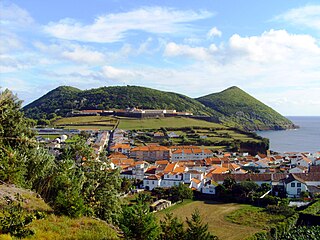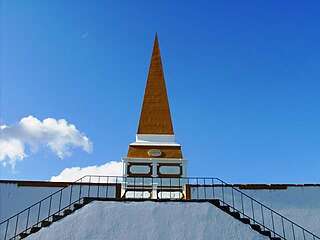History
Its situation, overlooking the open-spaces in the valley, was used by successive communities throughout the centuries (since the Neolithic until the Middle Ages) for protection and defence.
The Neolithic, the final division of the Stone Age, began about 12,000 years ago when the first development of farming appeared in the Epipalaeolithic Near East, and later in other parts of the world. The division lasted until the transitional period of the Chalcolithic from about 6,500 years ago, marked by the development of metallurgy, leading up to the Bronze Age and Iron Age. In Northern Europe, the Neolithic lasted until about 1700 BC, while in China it extended until 1200 BC. Other parts of the world remained broadly in the Neolithic stage of development, although this term may not be used, until European contact.

In the history of Europe, the Middle Ages lasted from the 5th to the 15th century. It began with the fall of the Western Roman Empire and merged into the Renaissance and the Age of Discovery. The Middle Ages is the middle period of the three traditional divisions of Western history: classical antiquity, the medieval period, and the modern period. The medieval period is itself subdivided into the Early, High, and Late Middle Ages.
Although some artifacts may have indicated a presence since the Bronze Age, the reality is that there has not been any correspondent confirmation beyond the Iron Age. It was in this period that a defensive structure (castro) was established over Monte Valinhas, as well as along the southern and southeastern flanks, taking advantage of the granite rocks that exist there.

The Bronze Age is a historical period characterized by the use of bronze, and in some areas proto-writing, and other early features of urban civilization. The Bronze Age is the second principal period of the three-age Stone-Bronze-Iron system, as proposed in modern times by Christian Jürgensen Thomsen, for classifying and studying ancient societies.
The Iron Age is the final epoch of the three-age system, preceded by the Stone Age (Neolithic) and the Bronze Age. It is an archaeological era in the prehistory and protohistory of Europe and the Ancient Near East, and by analogy also used of other parts of the Old World. The three-age system was introduced in the first half of the 19th century for the archaeology of Europe in particular, and by the later 19th century expanded to the archaeology of the Ancient Near East. Its name harks back to the mythological "Ages of Man" of Hesiod. As an archaeological era it was first introduced for Scandinavia by Christian Jürgensen Thomsen in the 1830s. By the 1860s, it was embraced as a useful division of the "earliest history of mankind" in general and began to be applied in Assyriology. The development of the now-conventional periodization in the archaeology of the Ancient Near East was developed in the 1920s to 1930s. As its name suggests, Iron Age technology is characterized by the production of tools and weaponry by ferrous metallurgy (ironworking), more specifically from carbon steel.

Castro culture is the archaeological term for the material culture of the north-western regions of the Iberian Peninsula from the end of the Bronze Age until it was subsumed by Roman culture. It is the culture associated with the Celtiberians, closely associated to the western Hallstatt horizon of Central Europe.
Later, during the Roman period, the area was reoccupied, possibly after the 1st century: artifacts that include fragments of ceramics and glass, lithics and metals were discovered during archaeological investigations.
Its strategic location attracted early settlers, but more important, medieval settlement during the Reconquista era, who utilized the hilltop and built a castle that lasted until the late 12th century or early 13th century, when it was abandoned.

The Reconquista is a name used in English to describe the period in the history of the Iberian Peninsula of about 780 years between the Umayyad conquest of Hispania in 711 and the fall of the Nasrid kingdom of Granada to the expanding Christian kingdoms in 1491. The completed conquest of Granada was the context of the Spanish voyages of discovery and conquest, and the Americas—the "New World"—ushered in the era of the Spanish and Portuguese colonial empires.
Archaeological study of the area began in at the end of the 1980s, by a team of investigators coordinated by António Manuel Silva, whom identified the walled compound. These studies also concluded the investigations into the circular castro structure, discovering a fireplace in one of the human residences. [1] The site remains unclassified, and under study since 1996.












